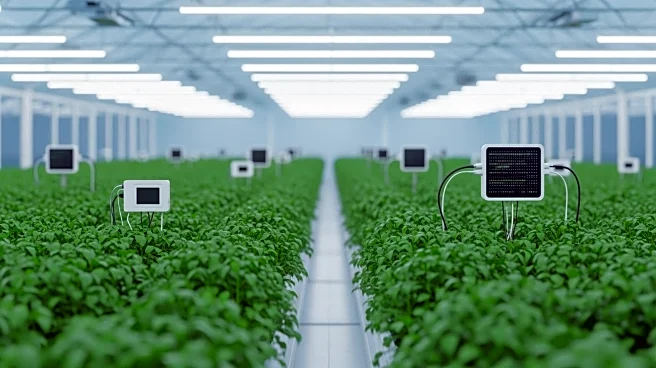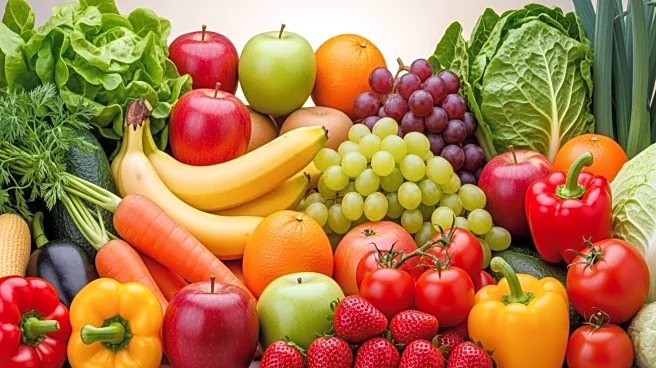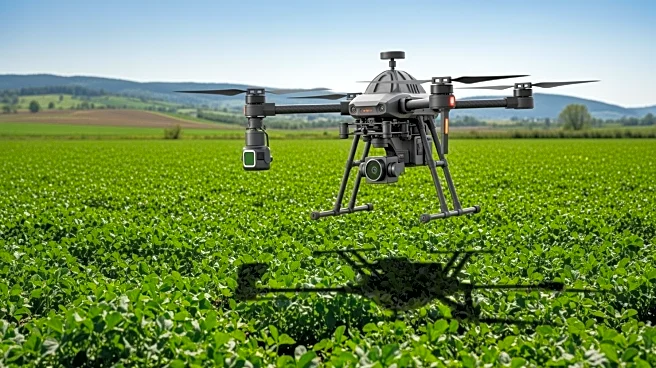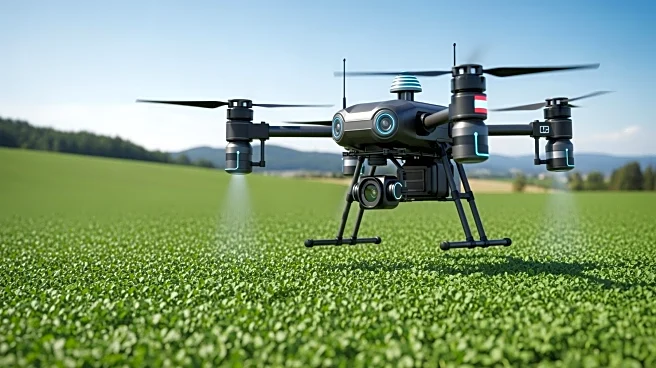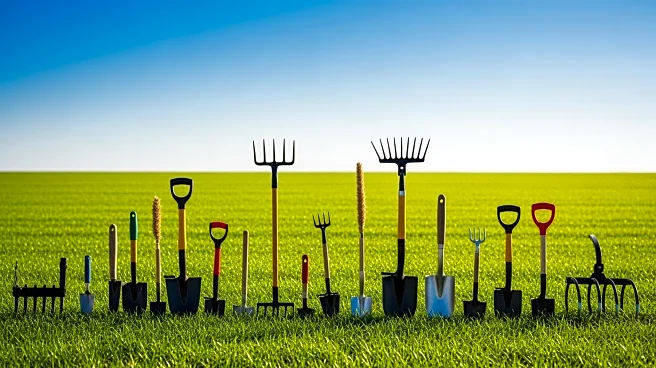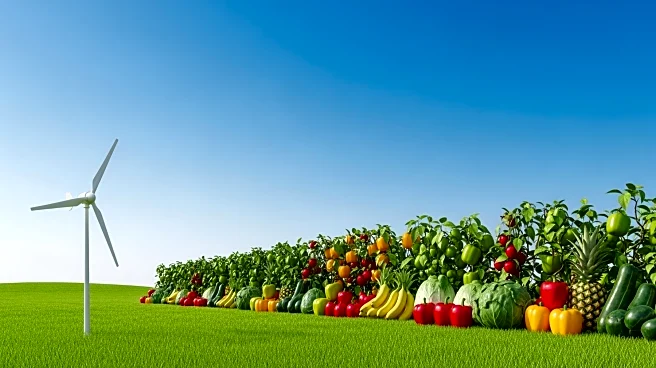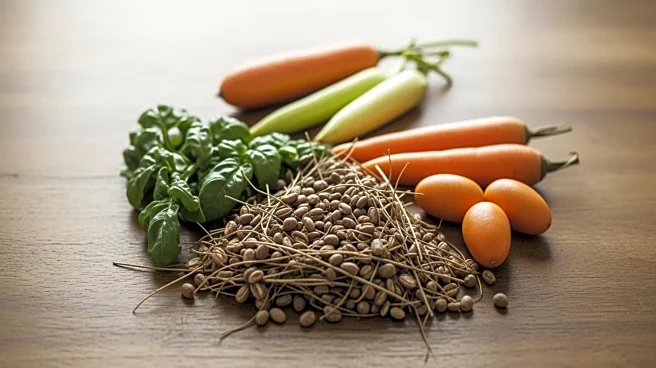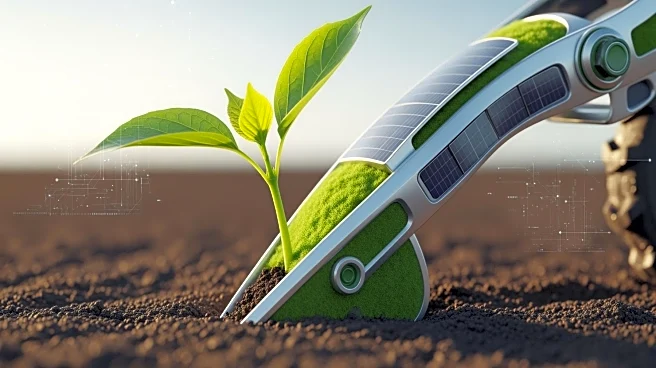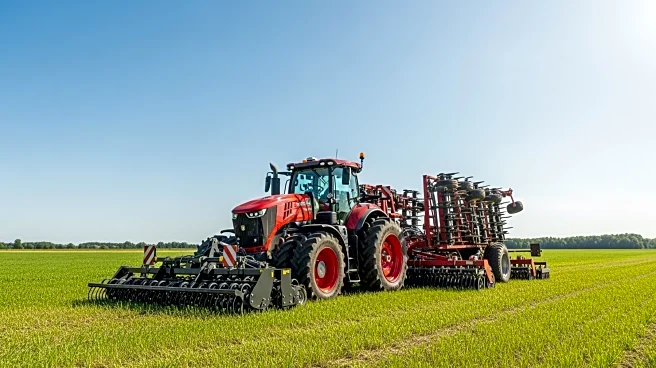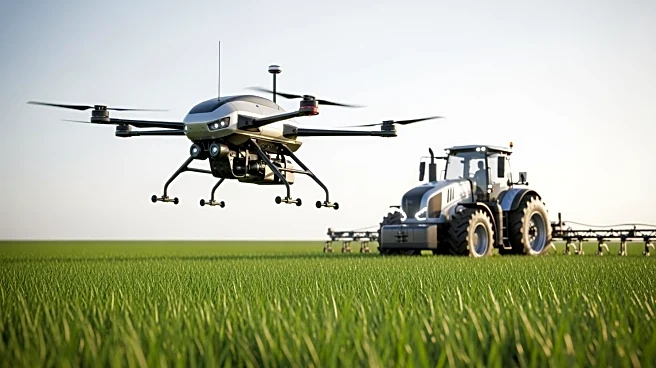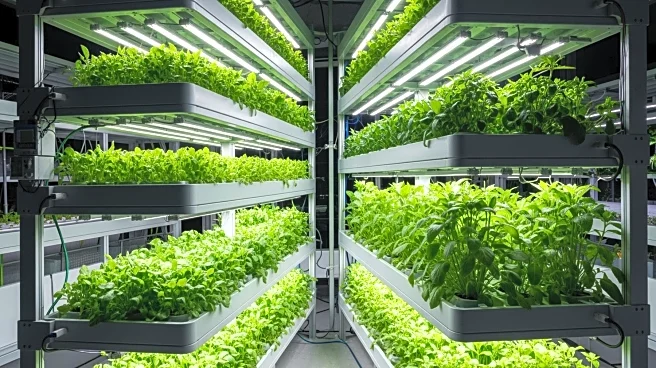What's Happening?
The United States smart agriculture market is anticipated to expand significantly, with a compound annual growth rate (CAGR) of 9.03% from 2025 to 2033. This growth is driven by the increasing adoption of sustainable and data-driven agricultural practices,
alongside technological advancements across farms. Smart agriculture, also known as precision agriculture, utilizes sensors, GPS systems, drones, and advanced analytics to monitor crops, livestock, and soil in real-time. These technologies enable farmers to make informed decisions that enhance productivity, reduce resource waste, and improve agricultural sustainability. The market's expansion is further supported by federal incentives and the involvement of agritech firms developing smart farm hardware and software. Key regions such as the Midwest and South are leading adopters, propelled by large-scale commercial farms and supportive state-level policies promoting agri-digitalization.
Why It's Important?
The growth of the smart agriculture market is crucial for enhancing the efficiency and sustainability of U.S. farming practices. By integrating precision tools and connected farming systems, farmers can optimize resource use, improve crop yields, and reduce environmental impact. This technological shift is expected to bolster food security and support the agricultural sector's resilience against climate change. Large farms are currently leading the market due to their capacity for technology adoption, but small and medium-sized farms are also projected to grow rapidly with the availability of affordable smart devices and federal technology grants. The expansion of smart agriculture is likely to drive economic growth in rural areas and foster innovation in agritech, positioning the U.S. as a global leader in precision farming.
What's Next?
The continued development and integration of smart agriculture technologies are expected to transform farming practices across the United States. As digital transformation accelerates, farmers will increasingly adopt advanced solutions to improve productivity and minimize environmental impact. The rise of vertical and greenhouse farming in urban areas is anticipated to further enhance agricultural efficiency and resilience. Additionally, expanding applications of cloud-based analytics platforms, remote sensing, and autonomous vehicles present significant opportunities for growth. The market will likely see increased investment in agritech innovation and a shift towards climate-smart farming, supported by substantial government backing.
Beyond the Headlines
The adoption of smart agriculture technologies raises important ethical and cultural considerations, particularly regarding data privacy and the digital literacy of farmers. Ensuring equitable access to these technologies for small and medium-sized farms is essential to prevent widening disparities in agricultural productivity. Moreover, the integration of AI and IoT in farming practices may lead to shifts in labor dynamics, requiring new skill sets and training for the agricultural workforce. As the industry evolves, stakeholders must address these challenges to ensure a sustainable and inclusive transition to digital farming.
